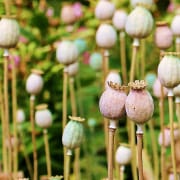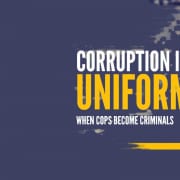|
Getting your Trinity Audio player ready...
|
By Kwazi Dlamini
Our new two-part series is based on a recent ENACT report into South Africa’s heroin abuse problem, and the role corruption plays in its spread. Part one looks at the current situation and its players, while part two looks at the deeper effects of drug use on users, communities, and others, and what can be done, including the recommendations from ENACT.
Africa’s eastern boundary is known as the heroin coast, and these days is viewed as an integrated regional criminal economy founded on the transit of heroin from Afghanistan to the West. Enabled by corruption, the heroin trade in East Africa is growing and has woven itself into the societies in the region. It extends as far as South Africa. Although most of this heroin will end up in Western markets, local consumption is rising and the African continent in general is seeing the sharpest increase in heroin use worldwide.
A 2018 report for ENACT, titled The heroin coast: A political economy along the eastern African seaboard and written by Simone Haysom, Peter Gastrow and Mark Shaw, laid bare the extent of the problem in the East African region. ENACT is implemented by the Institute for Security Studies and INTERPOL, in affiliation with the Global Initiative against Transnational Organised Crime. It uses research to build knowledge and skills to enhance Africa’s response to transnational organised crime.
The new report written for ENACT by Haysom, focuses on South Africa’s heroin problem – an offshoot of the heroin coast issue. ENACT interviewed drug dealers, users, community police organisations, and law enforcement officials during the course of its research.
In recent years South Africa has found itself heavily burdened by excessive drug use, specifically heroin. The drug has not only destroyed large swathes of our big cities but it has also made its way to small towns and even villages. This, says ENACT, signalled an important shift in local drug markets, and one that has not received attention in the public discourse.
Along the way South Africa has seen a rising number of youth falling victim to the drug, with many bright futures destroyed to mere ashes. This means the loss of the energies and productivity of young people who can contribute to the socio-economic development of the country.
Law enforcement actually enabling heroin spread
The continued widespread of drug use and drug smuggling can be attributed to poor policing and corrupt law enforcement officials. To a significant degree, the report notes, heroin is a “key commodity underpinning the criminal economy in South Africa and has facilitated the expansion of the criminal economy by pulling in new players as traffickers, dealers and users”.
Police forces around the world are susceptible to the severely corrupting effects of the drug trade, largely because it is both cash-based and criminalised. South Africa is no exception, says ENACT, and the three parts of the triangle – drug sellers, communities of drug users, and the police – have variable relationships.
In Cape Town, Nelson Mandela Bay, Johannesburg and Tshwane, the channels of heroin supply are largely controlled by Tanzanians. Many such drug dealers have reached ‘arrangements’ with police, that allow them to continue to ply their trade.
The report notes: “In Cape Town, dealers in gang-controlled neighbourhoods say that patrol vans treat their selling points as ATMs – a place to visit for small injections of cash. They claim there is no set price for bribes paid to police, but R50 to R100 was an average bribe payment for a low-level police officer in a patrol van.” The dealers claimed that police officers visited “a few times a week” for their cash hits.
Meanwhile, buying a police docket to prevent the conviction of a gang member costs R2 000.
In the city’s southern suburb of Wynberg, homeless people there said policemen from the local station tolerate drug users who do not commit crime. However, officers from outside the neighbourhood were not as accommodating, and indiscriminate abuse from such officers was frequently experienced.
In the north of the country, Tshwane users described some – but not all – police as predatory. They slotted police officers into three categories:
- Police officers who cannot be bribed (usually more senior and better paid);
- Police engaged in drug-busting operations, and who are required to produce arrests – these officers would force or contrive arrests if need be, e.g. by planting drugs;
- Corrupt police who will confiscate drugs from users and small-time dealers and sell them to other dealers. The interviewees described them as usually low-ranking officers, on patrol and out of sight.
ENACT’s interviews also uncovered allegations of corruption at more senior police levels, which allows the transit heroin trade to function in port cities like Durban. However, the organisation emphasises, these allegations require further investigation.
Law enforcement could do better
Although South Africa is part of the United Nations Convention against Illicit Traffic in Narcotic Drugs and Psychotropic substances, it seems to be lackadaisical in enforcing the mandate – which includes strengthening legislative and judicial capacity to implement international instruments on drug control, reducing drug trafficking, organised crime and enhancing the capacity of government institutions and civil society organisations to prevent drug use.
Law enforcement in South Africa also dismally fails to intercept drugs smuggled into the country. And in drug infested cities like Johannesburg and Durban, there are enclaves within the cities that are known for drug use and distribution, and police have failed to effectively deal with the problem. Places like Hillbrow in Johannesburg and South Beach Point in Durban have been overrun by drug lords and dealers for years – but instead of seeing police dealing with the problem you see police vans parking their work cars and having chats with the alleged drug dealers.
Furthermore, corruption within South African law enforcement can be seen by the frequent bust of their members for drugs and bribery, in 2017 a South African police officer was arrested in Brazil with bricks of cocaine. In April this year it was reported that a former police officer who enabled drug smuggling through OR Tambo International, will soon be sentenced.
Taking its toll on the vulnerable
While heroin is not the only drug on the market, it affects people of all backgrounds and ages but is most prevalent in poor and marginalised communities while going under different aliases i.e nyaope and whoonga.
Cape Flats in the Western Cape is arguably the most notorious place for organised gangs, drug use and dealing in South Africa. These organised gangs expose vulnerable young people to drugs, which in turn expose children to drug addicted fathers, mothers or guardians. Drug abuse and its effects can be attributed to violent behaviour, interpersonal violence and risky sexual behaviour. Users also become involved in robbing and even killing people in order to get money for drugs.
The Western Cape reported a rise in drug addicted mothers earlier this year; this spike means more children are exposed to drugs either by living in a toxic environment of drugs or through breastfeeding.
Child Welfare Stellenbosch director Bettie Nieuwoudt told Independent News that chances of a child being neglected by a mother on drugs are 100% because of the effects of the drugs, where people on drugs lose touch with reality. She also said that in 30% of all rape and child abuse cases, the mother was directly involved – either the perpetrator was her partner, she left the child unsupervised, or she was aware of the abuse. Nieuwoudt referred to a case of a 22-month-old toddler who was found dead in a drain in Cape Flats after his mother had left him with a male friend while she went to solicit drugs.
Research and studies have been done on the problem of drug abuse amongst young people but little has been done with the findings to implement productive and watertight programmes to combat the problem.
Heroin use increasing amongst SA’s males
Interviews with public health professionals working with people who use drugs suggest the population of heroin users has grown significantly in the last four years.
According to the UN 2016 World Drug Report, 19% of people treated for drug addiction in South Africa were treated for heroin use. A recent study by Soul City also revealed that South Africa is among the top 10 heaviest drug users in the world, and that while abuse of other drugs like cocaine and mandrax was going down amongst male users, heroin abuse was going up. Females showed a decline in the incidence of life-time substance use outside of dagga.
In addition, there has been a strong demographic shift. People who inject were once primarily white, but now black users have transitioned from smoking to injecting, and black South Africans make up the majority of people who inject drugs.
In response to this crisis the South African government launched various campaigns to educate people about drug use and also introduced learning programmes at school to teach young people about the dangers of drug use, as they are more likely to easily succumb to peer pressure. These programmes have not done enough to turn the situation around as drugs are still available on the streets.
The national drug master plan (NDMP), ENACT notes, is supposed to guide drug policy across several departments, with the latest edition (2018–2022) soon to be released. The NDMP is developed, implemented and monitored by the Central Drug Authority, which falls under the Department of Social Development, and is made up of representatives of all spheres of government.








